#there’s dwarf varieties
Explore tagged Tumblr posts
Text

Exhibit A in “Why my spouse will not let me plant a Rhododendron in our yard”
100 year old rhododendron and the woman who planted it

#I’m gonna get one anyway#there’s dwarf varieties#and you can prune them#theta’s garden#disaster house#rhododendron#rhodo#gardening
35K notes
·
View notes
Text

Body diversity in Dwarven Women,,,,, Ryoko Kui marry me
#crying screaming etc#the middle girl in the line up is ME#i am also appreciating the variety of fantasy underwear#dungeon meshi#delicious in dungeon#dwarves#dwarf#crazee talk
3K notes
·
View notes
Text


in one of the few nice things to happen in 2024: behold the babiest babies to ever baby, 6 months later
#'removing corms early will stunt the plant'#absolutely true! also inevitable in this emergency rescue's case#so now its just a dwarf of a dwarf variety of a tiny cultivar and stands at a lofty 2.5inches#(its a bambino i have come to find out)#(its four siblings are not this small though they are still bitty)
38 notes
·
View notes
Text
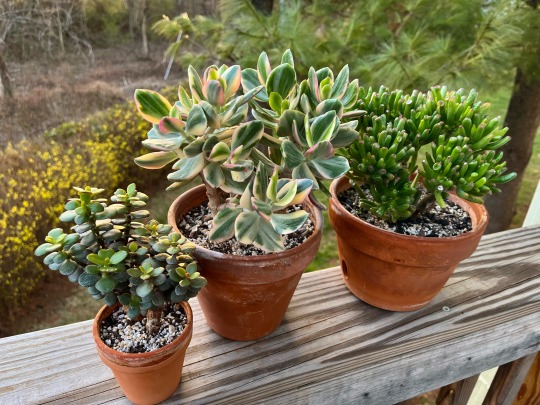
3 varieties of Crassula ovata (Jade plant)
#some dwarf variety + variegated + gollum#variegated jades are incredibly underrated imo#crassula ovata#jade plant#variegated jade#gollum jade#crassula ovata gollum#crassula ovata variegata#variegated#succulent#succulents#plant#plants#variegated succulent#variegated plant#crassula#succulentblr#plantblr#houseplants#botany#horticulture#mine
117 notes
·
View notes
Text
We just realized, more than 24 hours after the Round 1 info post, no one submitted:
"Magic Mirror on the wall, who's the fairest of them all?"
#or any variety#disney#Quotable Disney#yen sid comments#snow white and the seven dwarfs#the magic mirror#the evil queen
7 notes
·
View notes
Text
Want to see some neat things about how irises grow?
Remember when I dug up and divided ALL of my irises at my parents' place a few years back? And how I ended up with 50 rhizomes, and I had bought 9 more just a bit before that?
Well, my mom wants to try to amend the soil because it's not great. Most of the irises have just been surviving, but not well enough to bloom, and everything else planted in the area struggles similarly. In order to amend the soil, though, I needed to dig them all up.
Again.
I dug up 44 rhizomes this time, which is honestly a bit better than I expected. I knew that not all of the ones I put in were going to survive, but I was still surprised by how many I just dug up today.
Anyway, the learning bit!
So irises aren't bulbs, they're rhizomes. Each year they put up leaves at one end, and over time they kind of end up migrating in that direction. If they do really well at gathering and storing energy, instead of just continuing forward, they'll fork, putting up leaves on two sides and a stalk with blooms in the center. The following year, the pattern continues, going forward from each side of that fork. If a rhizome does REALLY well, you'll end up with a bunch of forks spreading out.
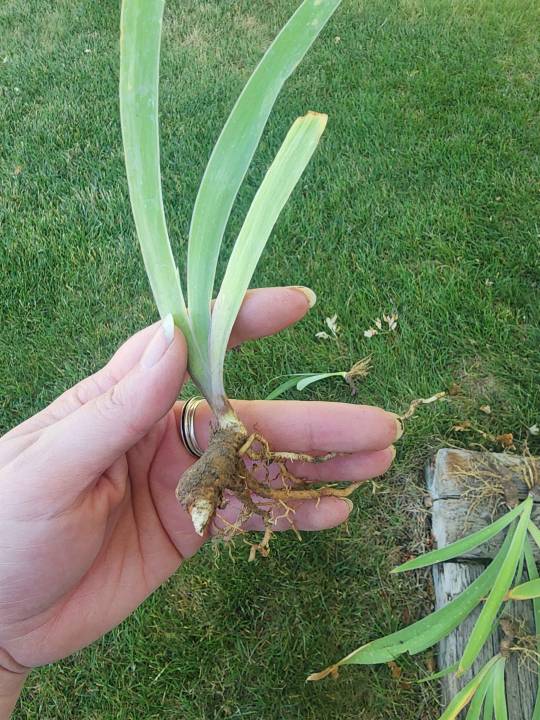
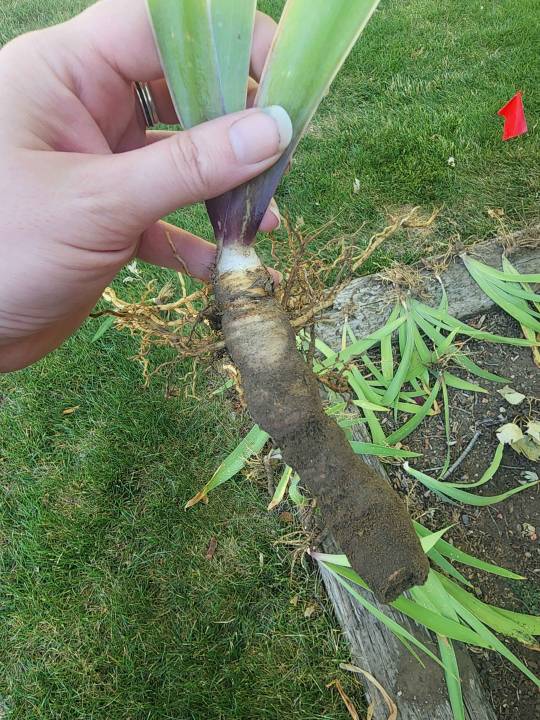
The one on the left has survived, but not gone very far, and the white at the end shows that I accidentally broke some of the old rhizome off when I was digging it back up. It also happens to be a dwarf variety, so the rhizome is smaller to begin with; all my other photos are of intermediate and tall bearded irises with much larger rhizomes.
The one on the right has done well enough to grow forward for a few years, with the oldest of the rhizome at the bottom (still healthy and full of stored energy!) and the newest year's growth at the top. Looking at the rhizome itself, I'd guess that one is about 4 years (which makes sense, 'cause I think I did the splitting back in 2020).
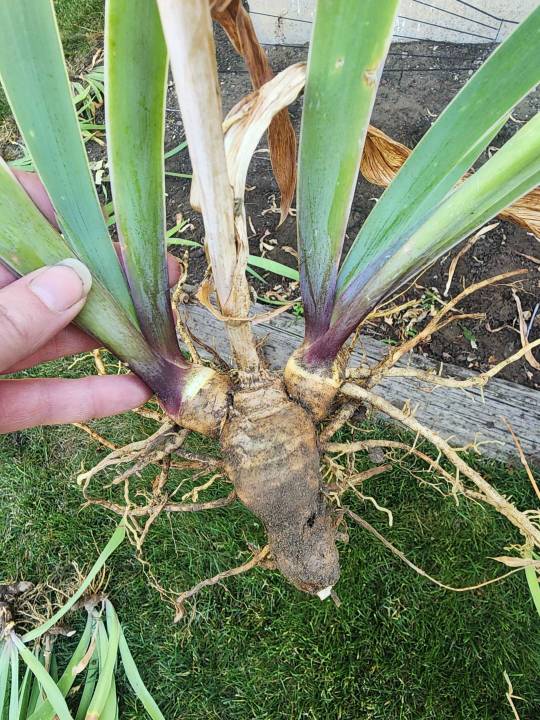
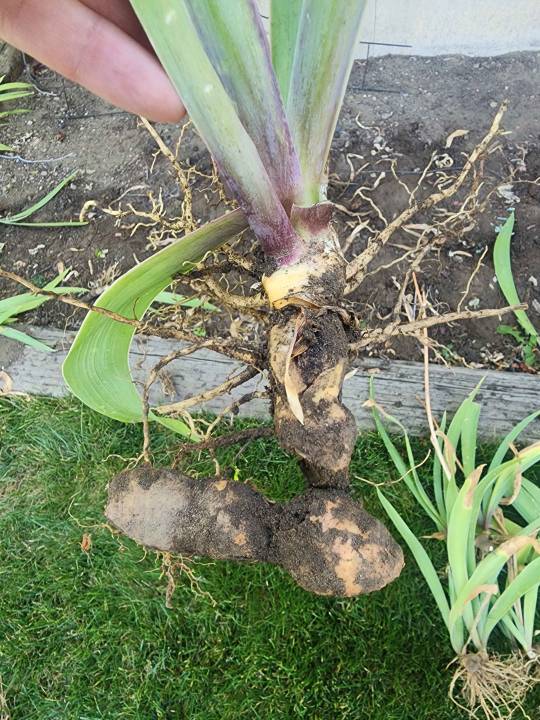
The one on the left bloomed this year; you can see the flower stalk dried out in the center, and the new fork in the rhizome to the sides. Next year, they'll continue in those two directions, and it won't go forward from the stalk any longer.
The one on the right bloomed a few years back, and though it kept growing forward from there, it hasn't bloomed since. The other side of the fork also died off, and it's now only growing in one direction again.

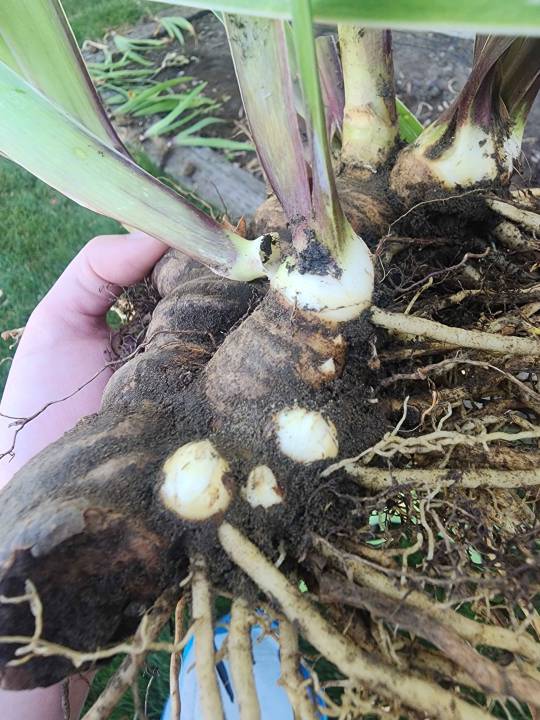
Last but most certainly not least we have THIS beast. This one has bloomed the last two or three years in a row. I honestly can't tell if the guy at the bottom right is part of the same rhizome or another one I planted too close that got subsumed by this monster, because it took ten minutes to get most of the clay off and there was still more. I'll need to actually rinse it off with the hose to really see if it's all one plant or two.
But I'm 95% sure that this guy is going to bloom again next year because of those nubs down along the bottom. They were below the soil, and they're too thick to be new roots, so I'm guessing that's what future growth looks like. Honestly, this guy should probably be divided, but I also don't want to ruin the chance of it blooming next year, so I'm going to put him back in the dirt as is and maybe divide next year after blooming season.
Anyway, irises are my favorite, and I think it's intriguing how they work. I'm hoping that we can get the soil a bit more balanced and that they'll do better after replanting them, because even though I just dug up 44, we only had 4 or 5 bloom this year. They aren't thriving in the soil as-is, because for as long as they've been established we should have had more blooming than that. It was still the best year since dividing them, though.
I've brought a bunch of them over to my apartment and I'm going to try them out in containers, mostly the dwarf varieties I had. ONE of the dwarfs bloomed this year and it was gorgeous, but I'm hoping the rest will do better in new soil with some extra attention.
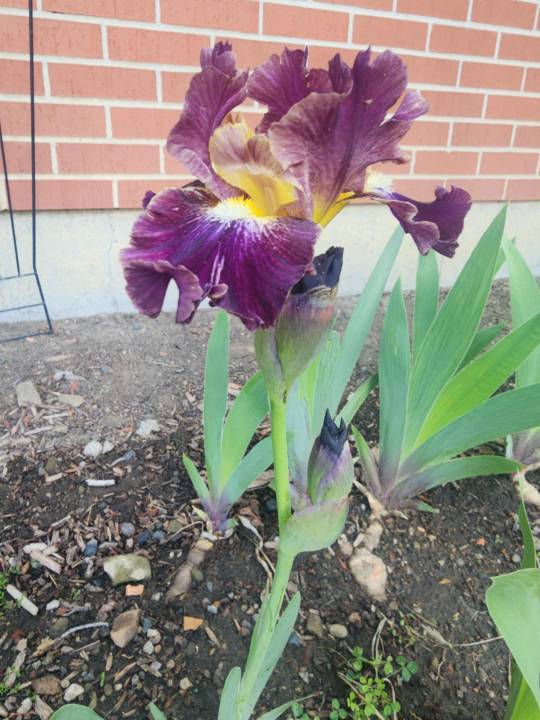
#irises#gardening#flowers#long post#I'm going to be digging clay out from under my nails for a week#honestly I don't think the clay is the worst part#I think the worst was where there's LESS clay and the water just drains straight through#oh that last pic you can see the rhizomes of the ones behind it which didn't bloom this year#but you can see the fork that shows it bloomed last year or the year prior#I DID plant them slightly below ground they just kind of eroded to the top over time#you're actually not supposed to plant them very deep and apparently should only cover the rhizome if it gets really hot where you are#one of the ones I dug up I had planted too deep and it forced itself back up it's like an S it's kind of funny#there's an iris grower in town that has THOUSANDS of varieties you can browse and purchase from every summer#her site says over 3000 anyway#I'm not allowed to go anymore :|#I have too many#but that's why I'm not going to be TOO sad if they don't survive in the containers#the thing that makes me saddest is the ones that keep blooming are not the ones I picked for myself#they're the kind of bland ones I picked for my mom or she picked for herself. Just a really normal pale purple. Meh.#the really fun colorful ones haven't bloomed yet and I've genuinely forgotten what they're supposed to look like ;3;#except for that dwarf I love him#I also found a few peanuts in shells in the dirt while I worked I think a squirrel must have been stashing them?
17 notes
·
View notes
Text
sneakily brought my wallet along to the Family Seasonal Tree Purchase Outing and raided the seasonal potted evergreens display to add a 4 inch alberta spruce to my collection
#my posts#'stop buying plants' stop me yourself#what you don't seem to understand is that my lust for dwarf varieties of trees cannot be contained
13 notes
·
View notes
Text
Decided to create some alien slugs for a comic. These splorpable little fellas are generally the least conflict-seeking sillies to ever be found by humanity. But, unfortunately they have to deal with the events I'll only detail once i get to that point in the story.

Also a tidbit I forgot to mention in the drawing is that they essentially have different varieties depending on the environment their ancestors have adapted to. And due to their planet's sheer humidity , all of them can exist on land, but there are those who are better adapted to the oceans (the majority of their population) and those who are better fit for their islands (the minority of their population). I might draw some examples later to represent the different races within the species after coming up with some of them.
#artists on tumblr#digital art#artwork#art#aliens#sea slugs#nudibranch#the fucking thing#the nature of predators#nop fanmade species#the blorbos#speculative biology#cute#blob#adorable#the sillies#planet#k2-155b#super earth#red dwarf star#squishy#*resisting the urge to grasp firmly*#fun fact they have 12 eyes#but they are small enough to be mistaken for freckles#yeah the Federation hasn't reached far enough to cull any variety in their population from the gene pool#and that alongside being invertebrates is how you reach enough genetic diversity that some varieties are getting categorized as subspecies#and fun fact: they have 3 tongues#they're also less vulnerable to salt than earth slugs#but it can still give them a slow and agonizing death; just adapt your amount of salt to their size multiply that by 1.5#fictional species
15 notes
·
View notes
Text
So real talk...
I didn't anticipate getting THIS attached to my little bug buddies. Like. I knew I would like having them.
I would fucking KILL for this tiny little mantis and this eensy weensy spider. I talk to them. I check up on them and give them a "good morning" every morning. Both of them look at me when I speak to them. Bracken has this adorable little habit of waving his pedipalps or one of his little paws at me (and yes! Spiders have paws). I don't handle either of them but I wish I could pet them (and I may feel more comfortable handling them when they're both bigger, they're just so tiny right now).
I fucking love these little guys. I want more of them. I adore them. Bug hyperfixation is back in full swing.
#personal#bugblr#like okay I KNOW I want a tarantula someday#honestly I've wanted one since I was a kid#and the pumpkin patch is a dwarf variety and is small and has relatively easy care#obviously I'm going to wait on that for a bit but like#also tarantulas are a multi year commitment
17 notes
·
View notes
Text

lmao so I caved immediately and got Veilguard despite my lack of free time in the near future. Anyway, my Rook kicks ass and I'm already in love with her.
Also, this character creator is the first one I've seen where I'm not restricted to a slender/curvy model if I want my character to have tits, and that's beautiful.
#Mipe plays#dragon age#dragon age veilguard#the beard is less remarkable in modern gaming#but in the context of dragon age I do want to note that I'm relieved I can give my dwarf lady a real beard#Inquisition only deigned to give them a variety of stubbles#which looked untidy so I never used them
3 notes
·
View notes
Text
thanks to the person who donated and said "to send bluebell to college" bluebell is dead but I'll be sending steve in his place, hope that's ok
#i didn't have a good picture of steve so i used bluebell lmao;; sorry for the hamster fraud#steve is a dove morph campbells dwarf hamster and is actually the variety i was looking for when i adopted bluebell#bluebell had been there for a long time because he was biting due to his blindness and people not warning him before they touched him#so i gave up my search for a dove hamster and adopted him#rhubarb.txt
2 notes
·
View notes
Text
pomegranate
Pomegranate
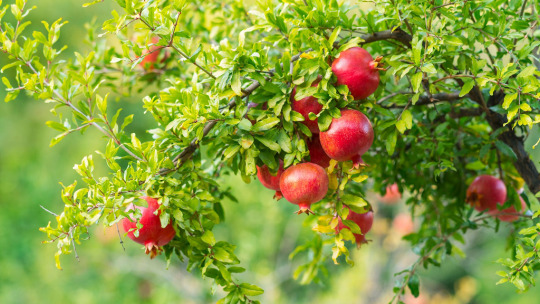
The pomegranate is famously known as the fruit of heaven belongs to the berry family. Pomegranate fruit is a delicious fruit and has juicy grains inside. Grow pomegranates as large, shrub or small trees.
Types��

There are 1200 different varieties of pomegranate which have unique tastes and various colours. There are purple hearts, Eversweet, wonderful, kazake, red silk, texas pink.
Purple heart
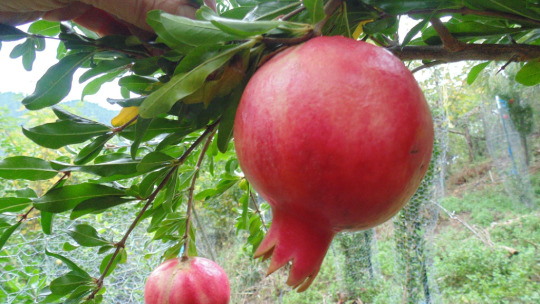
Purple heart varieties are large with dark red. Fruits begin to produce at about 3 years old. Pick fruit off a tree when it is mature. These pomegranate plants grow 12-30 feet tall and wide. Provide lots of health benefits. They are the best immune boosters and good healers.
Eversweet
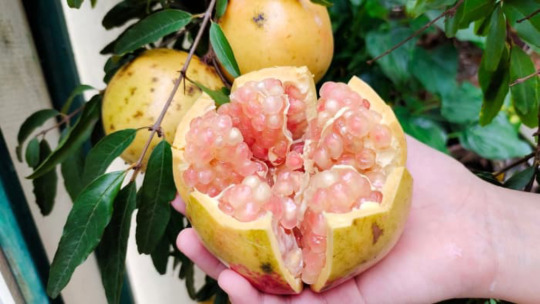
The color of the pomegranate is pinkish-pale red. Eversweet seeds are a little hard in texture and are highly nutritious containing vitamins A, C and E. Pomegranate trees are glossy, narrow leathery leaves which are lance-shaped. These varieties are self-pollinated. This is a national fruit of Iran.
Kazake
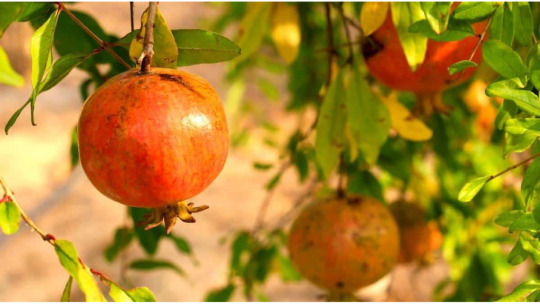
Kazake varieties produce medium to large size fruit. This is the most dwarfing species. This pomegranate plant is fast-growing with drought tolerant. This is a seeded fruit and it has a thick reddish outer covering. These flowers often fall off the branches rather than converting into fruit.
Red silk
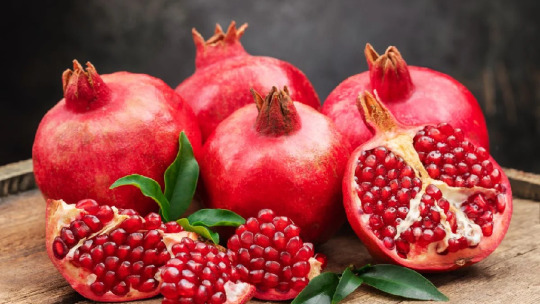
Red silk is the best pot-growing variety, which is a semi-dwarf growth habit. It has dark red flesh and red arils. Grows trees in hot and dry climatic conditions. Its contain fibre which keeps our digestive system healthy.
Texas pink

Texas pink pomegranate plant produces attractive blooming which converts pink fruits. This variety is a famous ornamental fruit plant. Texas pink is a self-fertile plant. It has large edible seeds.
Wonderful
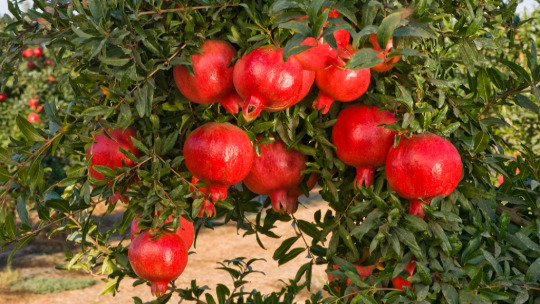
Wonderful pomegranate plant is the most common variety grown in the low desert of Arizona. Mix a teaspoon of natural honey in half a liter of water and spray directly on the flower with the help of a spray bottle. This will attract honey bees for pollination. This tip helps to increase the yield. This fruit is too sweet and highly beneficial.
Seed
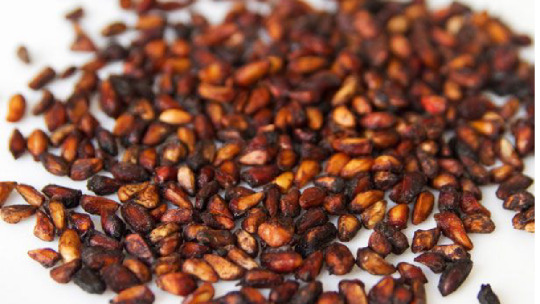
In this Punica granatum fruit plant seeds are also edible. It contains vitamins, minerals and antioxidants. In average one fruits can hold 1000 seeds. Seeds are covered with glowing red skin.
Soil

For better growth and development prefers to grow in well-drained loamy soil. Soil mix with 80% bone meal and 20% neem cake.
Water
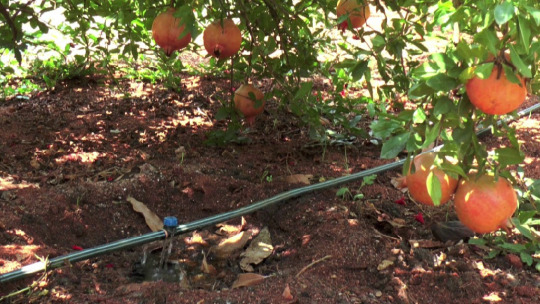
For mature pomegranate tree, adequate irrigation especially during the dry periods is very important to improve growth, fruit set, yield and fruit size.
Sunlight
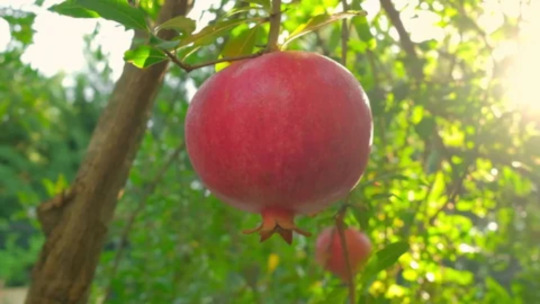
Select the location to keep the pomegranate plant with plenty of sunlight. In cooler climates, plant pome tree with western exposure. Requires 6 hours’ of direct sunlight.
Fertilizer
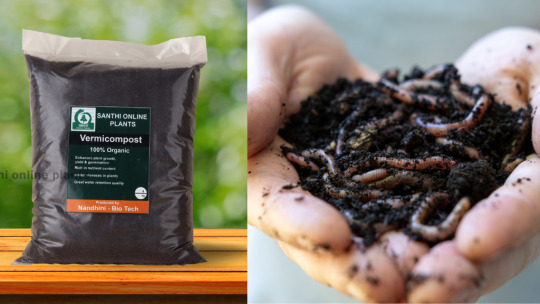
Good organic mulch and cow manure can improve plant growth and soil fertility. Application of vermicompost at monthly intervals.
Repotting
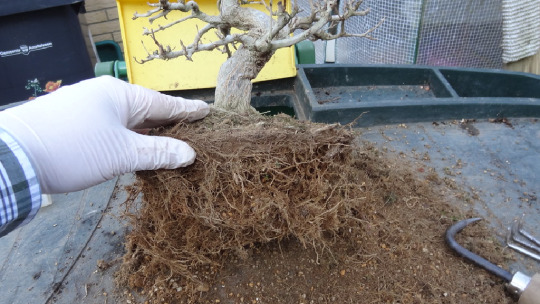
Repot the plant into a new pot when the root bound occurs. Normally repot the plant for two to three years.
Pruning
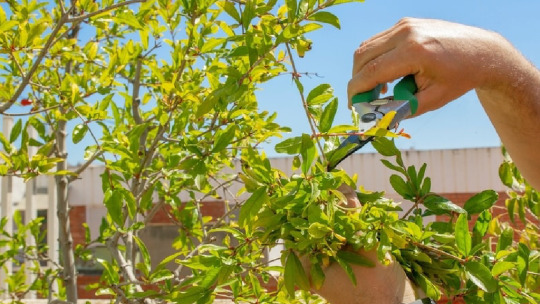
The best time for pome tree pruning is late winter, after harvesting the fruits. Branch pruning can increase fruit production. Pruning the roots will help to reduce root bound. Pruned the tree before repotting.
Benefits
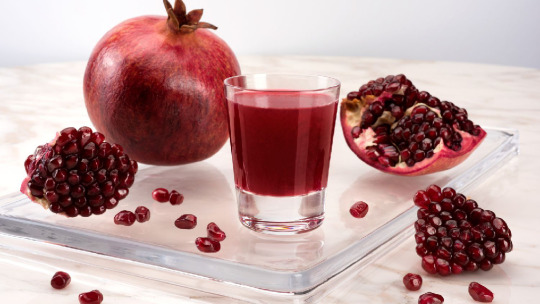
Daily consumption of pome gives us strength and energy
Its contain fibre which keeps our digestive system healthy.
Punica granatum helps to increase appetite.
Punica granatum is highly beneficial for pregnant women.
Reduces pain in joints and arthritis.
Keep your earth clean and green...!
#kazake#Kazake varieties produce medium to large size fruit. This is the most dwarfing species. This pomegranate plant is fast-growing with drought#Red silk#red silk#Red silk is the best pot-growing variety#which is a semi-dwarf growth habit. It has dark red flesh and red arils. Grows trees in hot and dry climatic conditions. Its contain fibre#Texas pink#texas pink#Texas pink pomegranate plant produces attractive blooming which converts pink fruits. This variety is a famous ornamental fruit plant. Texa#Wonderful#wonderful pomegranate plant#Wonderful pomegranate plant is the most common variety grown in the low desert of Arizona. Mix a teaspoon of natural honey in half a liter#Seed#seed pome#In this Punica granatum fruit plant seeds are also edible. It contains vitamins#minerals and antioxidants. In average one fruits can hold 1000 seeds. Seeds are covered with glowing red skin.#Soil#soil for pome#For better growth and development prefers to grow in well-drained loamy soil. Soil mix with 80% bone meal and 20% neem cake.#Water#watering for pome#For mature pomegranate tree#adequate irrigation especially during the dry periods is very important to improve growth#fruit set#yield and fruit size.#Sunlight#sunlight for pome fruit#Select the location to keep the pomegranate plant with plenty of sunlight. In cooler climates#plant pome tree with western exposure. Requires 6 hours’ of direct sunlight.#Fertilizer
1 note
·
View note
Text
if bioware decided to add extra origins to DAO, i wouldn't play another game ever again
#i love replaying dao but i want more variety in the enclosure#surfacer dwarf! commoner human! apostate!
2 notes
·
View notes
Text
ive changed the fish i want (eventually
#rn its still the gourami by themselves- i do want ember tetra again but im kind of still freaked out from all of them dying immediately#i know they were ill b4 i got them & its not my fault but still scary stressful trying to acclimate 10 new fish then noticing they r dying#erm. anyways. i think my original plan was chilli rasbora dwarf gourami and a dwarf pleco species#i love plecos so much however im thinking against it now bc a smaller variety say a snowball costs way 2 much for me rn & its not at my lfs#my new tank plan is dwarf gourami ember tetra (any small orange/yellow fish would be ok tbh) and cherry shrimp#i think it would make a good layer of interesting fish (gourami like the top of the tank embers like the middle shrimp like the bottom)#and the colors go very well together. it'd become a really beautiful tank. obviously not saying that in an animals are decoration way#i eventually want red root floaters and driftwood so picture that too. my fish will be so happy in their little community:)#and ill be so happy watching them
2 notes
·
View notes
Text
dwarf fortress and then itch trash
twitch_live
#vtuber en#homunculus#roger d. cheeto jr#vtubers of tumblr#twitch#live now#dwarf fortress#broken world mod#itch games#itch.io#variety
0 notes
Text
its so ??? when ppl criticize fuj0s 4 not liking ge!kkomi/b4ra or w/e or say theyre fake or it proves theyre solely fetishizers as if, like, Preference isnt a thing.
i dont identify as a fujin but jus as im not rly a fan of bara content, i dont like big hairy men in my m/f ships either or solo in general. n jus like ppl who rly like those bigger hairier guys will prob not b attracted 2 the slender bishies found in most animanga media, ppl who arent attracted 2 hairy men wont like 2 see them featured in what they watch/read all tht much either. ur not a better person 4 preferring the lesser liked 1 over the common 1, or 4 liking both.
same goes 4 yuri, where himej!n who might not like the cutesy uwu kyaa girls n prefer mature older women wont gravitate 2 schoolgirl yu/ri n instead go 4 ones w women more their type bc thts what they prefer 2 look at (tho they might dabble in a cutesy lady x mature women every once in a while, should it strike their fancy. same w the BL ships in the prev paragraph)
n sometimes, 4 both GL n BL, liking a ship 4 its charas or their interactions can trump over personal preference (esp if the ship is from an anime/game/etc thts not romance/BL or GL oriented aka u didnt come 4 the pre-made ship content, u jus discovered a ship or 2 tht u liked from charas tht were there); but tht doesnt mean some1 will seek out content featuring types of guys or girls tht they dont find visually appeasing, whether in BL or GL or HL.
#in modern day a lot more ppl like bigger hairy guys like tht dwarf bloke from d/un/mesh or w/e but 4 a lot#of ppl its jus not their style. like if u dont like the kyaa uwu boys ur no less of a fudan than ppl who Do primarily like n consume tht#content u kno? Pref-er-ence. say it w me now.#'ur jus saying this bc ur a dumb fuj0 arent u' i hav m/m ships but i dont focus on original BLs a lot nor consider myself a fuj!n i jus#think its stupid 2 criticize ppl 4 [looks @ paper] not rly liking a type of man thts a bit of a niche in the world of animanga.#or old man ya0i either. i dont like old men in general no matter the ship so im not often a fan unless the ship itself has me intrigued.#like if its charas i already kno im like 'ooo' but im not like 'YIPPEE OLD MEN!!!!' thts 4 the ossan likers n whatnot. v valid but its Type#w yu/ri well most of the things im in2 r mostly men sadly n the girl things r the cutesy girls like LL so not much variety there.#older women r p cool tho. i like em more than old men. jus not 2 old. so again jus preferences.#like do ppl who arent in2 furriez also count as fake fuj!n 4 not liking anthr0 bl. is tht the hill we're dying on. (<- im a fu/rry)#delete later
0 notes